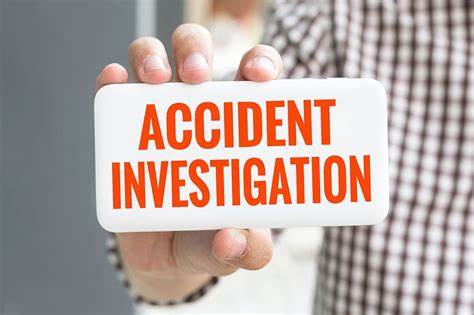Accident investigation is the process of determining the root causes of accidents, on-the-job injuries, property damage, and near misses – in order to prevent them from occurring again.
What are the requirements – the basics ?
- Set a policy outlining that accidents and near misses, both large and small, will be investigated equally robustly
- Develop an accident investigation process that focuses on fact finding, not fault finding
- Provide appropriate training and tools to the employees that are tasked with conducting accident investigations
- Determine the root causes of why the event occurred
- Make changes to safeguard the event from happening again
- Audit the completed accident investigations to ensure they are being completed in a timely basis and with an adequate level of detail
Where do I start ?
Workplace accidents should be investigated as soon as possible after they occur. The goals of a timely and thorough accident investigation should be to:
- Determine the cause of the accident
• Prevent the accident from happening again
• Improve the health and safety conditions within the workplace
• Determine whether a violation of Federal or Emirate specific safety and health law occurred
• Determine the need for repair or replacement of damaged items
• Determine the need for additional education and training for employees
Background procedures to follow:
- Review reports of any injuries of any injured employee(s) and/or others whose actions contributed to the accident
- Review reports of any injuries and/or damage to equipment, machines, buildings, assets or property
- Compile a list of witnesses to the accident
- Gather information as regards to the normal conditions and/or operations of the area. This information would include: maps, floor plans, wiring diagrams, piping or architectural drawings or operational guidelines as applicable
- Meet with managers, supervisors and other employees responsible for the affected area, to outline the purpose and goals of the investigation
- Ensure that there is a basic understanding of the materials, equipment, operation or process involved
The site investigation:
- Arrive at the scene of the accident as soon as possible after the incident has occurred
- Restrict the accident scene to authorized persons during the site investigation
- Ensure that movable evidence is secured to prevent tampering or other possible changes
- Determine what physical changes may have occurred following the accident. Examples include; clean up, weather, maintenance and normal usage
- Review the entire area and record the pertinent initial impressions. Include; the status and condition of any buildings, grounds, equipment, lighting and ventilation
- Draw and record parts of the accident scene where equipment or machinery involved in the accident is located or where actions that contributed to the accident occurred
Interviews:
- Prepare a list of witnesses and any other individuals to be interviewed
• When possible, do not allow more than 24 hours to elapse before conducting the interviews
• Conduct the interviews in a private setting to avoid interruptions, distractions or undue pressure on the witness
• Prepare a list of questions in advance of any interview. Use open questions that require explanatory answers. Avoid questions that may lead or suggest an answer, example: “Is it true that the injured employee was running?” or, closed questions that can be answered with either “yes” or “no.” Questions should be structured from the following six key elements: Who? What? Where? When? How? Why?
Analysis and reporting
Causes – The cause of an accident is any behavior, condition, act, or omission without which the accident may not have happened, or the severity of the injuries would have been less. Causes can be characterized as direct, indirect, or contributing
Direct Causes – Acts or omissions that directly relate to the accident. These could include workers or other individuals who operate equipment in an unsafe manner or operate equipment known to have safety defects or deficiencies, do not follow required or necessary safety precautions or procedures, fail to correct known damage to or faulty operations of equipment, machinery, or vehicles
Indirect Causes – Conditions that directly contribute to the occurrence of a direct cause. These causes could include: defective or unusual conditions of equipment, machinery, vehicles, buildings, or grounds. Unusual conditions of workers or other individuals, such as intoxication, physical defects or limitations, hazardous or unusual conditions of weather
Contributing causes – Conditions, programmes, acts, or omissions that are not directly related to the accident but did contribute to the occurrence or existence of a direct or an indirect cause. These causes could include the lack of/ or an inadequate: safety programme, training programme, preventive maintenance programme, corrective maintenance programme, supervision, enforcement, design of equipment, machinery, vehicles, facilities, advisory or warning communication, labels, or signs.
If you need assistance with your company’s health and safety, Corporate OHS offers a range of HSE consultancy services.
These include; risk assessments and hazard identification, HSE management system development, implementation, maintenance and review including accredited systems such as ISO 45001 or regionally specific systems such as OSHAD compliant, HSE legal compliance review, accident investigations, crisis management and business continuity.
In addition to project work, Corporate OHS also offers the option of a flexible contract and a monthly retainer, meaning that companies have access to HSE services without the burden of a permanent cost. For enquiries or to find out more about our services, please visit our website or send an email to enquiries@corporateohs.com

